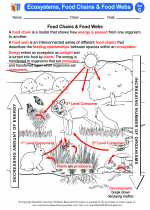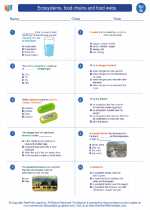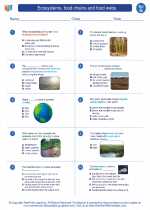Immune Response
The immune response is the body's defense mechanism against harmful pathogens, such as bacteria, viruses, and other microorganisms, as well as against foreign substances and abnormal cells. It is a complex system involving many different cells, tissues, and organs working together to protect the body from infection and disease.
Types of Immune Response
There are two main types of immune response: innate and adaptive.
Innate Immune Response
The innate immune response is the body's first line of defense against pathogens. It includes physical barriers such as the skin and mucous membranes, as well as cellular and chemical defenses. This type of response is rapid and non-specific, meaning it provides a general defense against a wide range of pathogens.
Adaptive Immune Response
The adaptive immune response is a more specific and targeted response that develops over time. It involves specialized cells and proteins that recognize and remember specific pathogens, allowing the body to mount a more effective defense upon subsequent exposure to the same pathogen.
Key Players in the Immune Response
Several types of cells and proteins play crucial roles in the immune response, including:
- T-cells: A type of white blood cell that plays a central role in the adaptive immune response by recognizing and destroying infected or abnormal cells.
- B-cells: Another type of white blood cell that produces antibodies, which are proteins that specifically target and neutralize pathogens.
- Antibodies: Proteins produced by B-cells that bind to specific antigens (foreign substances) and mark them for destruction by other immune cells.
- Macrophages: Large white blood cells that engulf and destroy pathogens and dead or damaged cells.
- Cytokines: Signaling molecules produced by immune cells to regulate the immune response.
Study Guide
Here are some key concepts to focus on when studying the immune response:
- Understand the difference between innate and adaptive immune responses, including their mechanisms and key components.
- Learn about the roles of different immune cells and proteins in the immune response, such as T-cells, B-cells, antibodies, macrophages, and cytokines.
- Explore the process of antigen recognition and the production of specific immune responses against pathogens.
- Understand the concept of immunological memory and how it influences the body's ability to respond to recurring infections.
- Study the factors that can influence the immune response, including genetic, environmental, and lifestyle factors.
Remember to review and understand the diagrams and flowcharts that illustrate the various pathways and interactions involved in the immune response.
Good luck with your studies!
.◂Science Worksheets and Study Guides Seventh Grade. Ecosystems, food chains and food webs

 Activity Lesson
Activity Lesson
 Worksheet/Answer key
Worksheet/Answer key
 Worksheet/Answer key
Worksheet/Answer key
 Worksheet/Answer key
Worksheet/Answer key
 Vocabulary/Answer key
Vocabulary/Answer key
 Vocabulary/Answer key
Vocabulary/Answer key
 Vocabulary/Answer key
Vocabulary/Answer key
 Vocabulary/Answer key
Vocabulary/Answer key
 Vocabulary/Answer key
Vocabulary/Answer key
